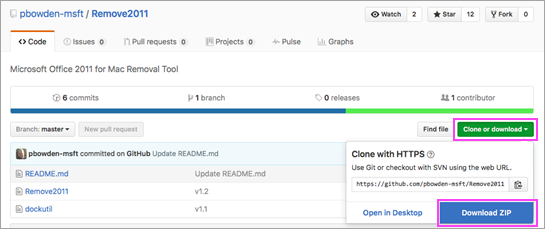Office For Mac Removal Tool
This tool can also help if you've subscribed to Office 365 but previously had a one-time purchase of Office for Mac on your computer, and aren't seeing certain subscription features. This can be due to your copy of Office still using the license of your one-time purchase and not your subscription. Before you begin. To do a complete uninstall of Office for Mac 2011, you can download and run this handy automated tool. This is for troubleshooting purposes only. To do a regular uninstall, see Uninstall Office for Mac.
If you're troubleshooting Office and would like to remove the license files on your Mac, you can use the license removal tool. This will completely remove all licenses for Office for Mac.
Important: Before using the tool, make sure you have the correct account info and password associated with your purchase of Office available for when you reactivate.
This tool can also help if you've subscribed to Office 365 but previously had a one-time purchase of Office for Mac on your computer, and aren't seeing certain subscription features. This can be due to your copy of Office still using the license of your one-time purchase and not your subscription.
Before you begin
1. Check what license your version of Office is currently using. See, What version of Office am I using?
Note: If you're looking for subscription features and your version is using an Office 365 subscription license, then you don't need to do the rest of these steps. You're already using the correct license. See When do I get the newest features for Office 365? for more info on why you may not be seeing subscription features yet.
2. If you aren't uninstalling the Office apps to reinstall them later, quit out of all Office apps. If you've already uninstalled Office, go to the next step.
Download and run the license removal tool
1. Download the license removal tool.
2. Open the .pkg file from your Mac's Downloads folder.
Note: If you get an 'unidentified developer' error, try opening the file by holding Control + clicking the file > Open.
3. Select Continue and follow the prompts in the setup wizard.
Caution: We recommend you double-check that you have the correct account info ready by logging into Office.com/signin and checking for the license you want to activate with.
4. When you're ready to complete the license removal, select Install. You may need to enter your Mac's local admin account password.
After the tool successfully removes licenses, select Close.
5. Now launch any Office app and sign in to activate with the email account associated with your Office for Mac license. If you're troubleshooting an issue, you may need to reinstall Office before signing in.
After you've successfully activated, restart your computer and then you're good to go!
Note: If your account has both an Office 365 for Mac license and a one-time purchase associated with it, you'll be prompted to choose which license you want to activate with. We recommend always choosing Office 365 for Mac if available.
6. Uninstall the License Removal Tool by dragging the Microsoft_Office_License_Removal file from Finder > Downloads to Trash.
See Also
I have Office 2008 for OS X through Microsoft's HUP (Home Use Program). I want to reinstall, so I need to first remove it.
For Office on OS X, Microsoft provides a binary called '/Applications/Microsoft Office 2008/Additional Tools/Remove Office/Remove Office'. When I run it, it says it can't find any versions of office on my computer and won't do anything.
I know MS-Office for Mac puts many different components in various places all over the system and not just within it's own applications folder, so how to I successfully remove Office so I can re-install?
slhck4 Answers
Basically, without trying to fix Office Uninstaller nor using any other Microsoft tools, you can search your any files containing the name office or microsoft :
You can easily find the result in ~/Desktop/2008.txt.
And then delete files referring to Office 2008.

EDIT :

I've just downloaded Office 2008 Trial and the installer is a .mpkg, so you can use tools like Pacifist or Suspicious Package to check what is installed with Microsoft Office.
Delete Office 2016 Mac
Delete the Microsoft Office 2008 folder from Applications. Office also has files located in your user folder at ~/Library/Application Support/Microsoft/Office and ~/Library/Preferences/Microsoft/Office 2008. It stores receipts for all the updates in /Library/Receipts and fonts in /Library/Fonts/Microsoft. I may be missing something but those seem to be the main folders.
If you want to reinstall Office 2008, it should be sufficient to remove the Microsoft Office 2008 application folder as well as the file ~/Library/Preferences/Microsoft/Office 2008/Microsoft Office 2008 Settings.plist. That way, you won't lose any templates in your user folder.
Kaspersky For Mac Removal Tool
Office For Mac Removal Tool
I was having the same problem a few weeks ago. I re-ran the installer, and it this time it detected Office 2008. Success!
So, I would try re-running the installer, maybe after a reboot. You could also try downloading the latest updates for Office 2008. Maybe the uninstaller had a bug that has been fixed.
Office 2016 For Mac Removal Tool
